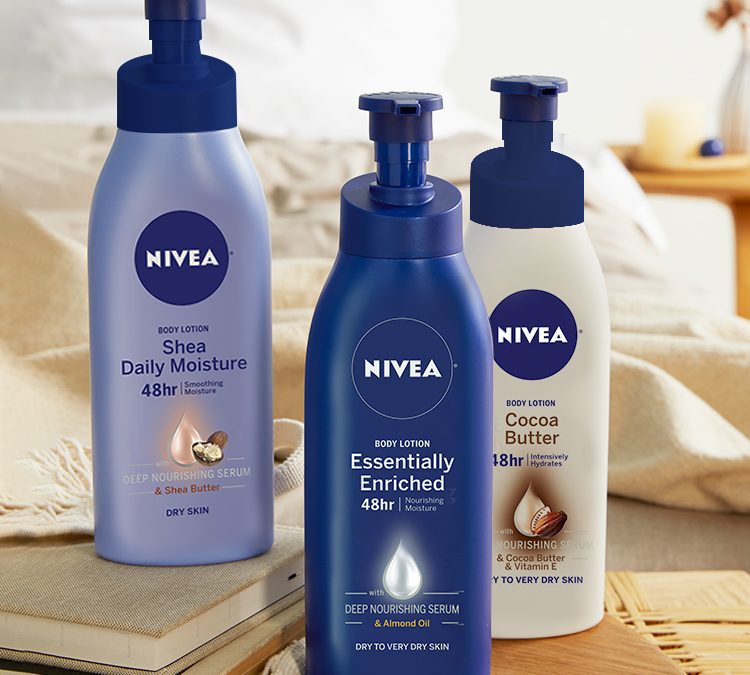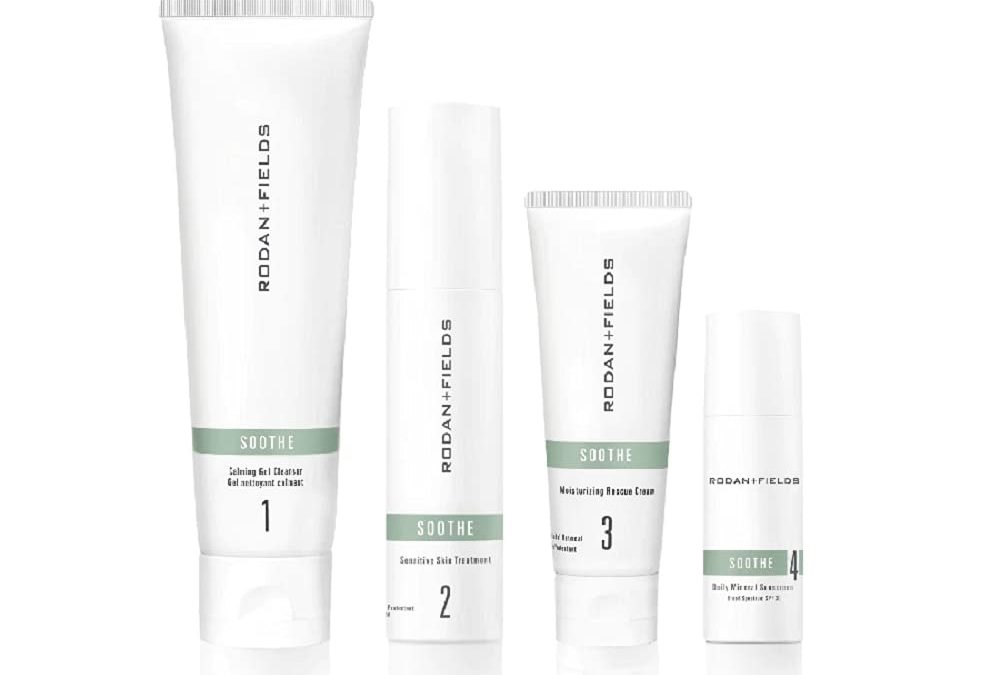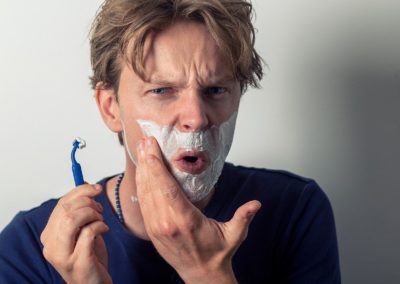How To Stop Bleeding From Shaving

written by nail expert Jess Rowley
How To Stop Bleeding From Shaving
We’ve all got a nick or cut from shaving and all of a sudden we can’t stop bleeding and have specs of toilet paper stuck over our faces.
Well, if you want to know how to avoid bleeding altogether then you may need to refine your shaving routine as bleeding from shaving isn’t really supposed to happen and can largely be avoided if you follow some steps.
However, you’re here because the damage has been done and you need to know how to stop the cut from gushing blood. Luckily, for you, we’ve got some ways to stop the bleeding.
One way to avoid bleeding altogether is to invest in an electric shaver and while that may sound expensive, you’ll be surprised to know some of the best on the market are under $100.
Methods To Stop Bleeding
Pressure
Applying pressure on the injured area is one of the best methods to stop bleeding and the one you’ve most likely heard of. Using a clean tissue, maintain pressure on the cut, and depending on the cut size, hold for at least 30 seconds.
Alum Block
Alum blocks are usually made of potassium alum. This compound will constrict the blood vessels and stop the cut from bleeding. It’s easy to use an alum block. Simply run it under cold water and rub it directly over the affected area until the bleeding stops.
You can also use the alum block when you don’t have a razor nick, as it is also a great antiseptic and can prevent infections after normal shaving. Just apply it over a wet face and neck after shaving and before you apply aftershave.
Ice
It’s well known that if you get injured or cut, use ice cubes to reduce the pain and swelling. Exposing the cut to cold will reduce reactions, including blood circulation. Simply press an ice cube against your skin for 15-30 seconds, then remove it. Repeat this process multiple times until the bleeding stops.
Styptic pencil
Styptic pencils are similar to alum blocks in that they are also made from the chemical compound, alum, though often in a stronger form, aluminum sulfate. They’re designed specifically to stop bleeding from razor nicks. It is a go-to product for when the alum block fails to clot the bleeding.
To use a styptic pencil, run the tip of the pencil under cold water and work it over the affected area until the bleeding stops. It should sting but this is because of the antiseptic. There will be a white residue, then just leave it for two minutes and rinse.
Lip balm
Lip balms are surprisingly good at closing wounds. However, it’s important to make sure you scrape off the parts of the chapstick that were in touch with your lips. This way, you’ll reduce the chances of contaminating the wound.
Deodorant
That’s right, you can use deodorant too. Most deodorants and antiperspirants contain aluminum chloride, which is a potent vasoconstrictor. To get technical, it will reduce the diameter of blood vessels, which helps to stop the bleeding.
Mouthwash
Mouthwash can be applied to the cut as it contains alcohol, which would cause the surrounding tissues to contract and halt blood circulation. It also contains antibacterial compounds that reduce the risk of infecting the injured area.
Toilet Paper
While not the best method out there, it’s certainly a classic. Toilet paper is a helpful way to stop the bleeding. However, toilet paper has no antiseptic qualities; therefore, a shaving cut does need to be washed thoroughly before application.
Coffee/Tea
Coffee or caffeinated tea will help to reduce puffiness and redness. Coffee can get a cut to stop bleeding faster, enabling a quicker healing process. You could try applying coffee grounds or a cooled-off tea bag to your cut however, this doesn’t have the medical backing that other methods do.
Petroleum Jelly
Like a lip balm, petroleum jelly (Vaseline) can be an effective sealant for a shaving cut. Petroleum jelly has no disinfectant or astringent properties. Therefore, it should only be used after a shaving cut has been treated.
How To Treat A Wound
Follow these steps to quickly treat an open wound:
- Wash your hands – Cleaning your hands will prevent the spread of bacteria.
- Disinfect – Clean the wound with cool soapy water, alcohol, or another disinfectant.
- Rinse – Apply ice-cold water to temporarily numb the pain.
- Apply Pressure – Press a clean washcloth or gauze firmly on the shaving cut. Hold until the bleeding has stopped.
- Treat Wound – Place a band-aid on the wound.
- Hospital (Last resort) – If the bleeding doesn’t stop then you may need to seek medical attention
Preventing Future Shaving Cuts
- Technique: The most common cause of shaving cuts is poor technique. This includes applying too much pressure, shaving against the grain, not holding the skin taut, and in some instances, not holding the razor properly.
- Lubrication: Pre-shave oils and shaving cream increase lubrication and provide a cushion to the razor blade. They also help to reduce friction and increase pliability to the skin. Use a shaving cream that retains heat and moisture and is absent of skin-drying alcohol.
- Dull Blades: A dull blade does a poor job of cleanly removing facial hair and requires additional pressure. With increased pressure applied, the razor blade is more likely to cut your skin so be sure to change your razor blade regularly.
Frequently Asked Questions
Why do shaving wounds bleed so much?
You have a lot of blood vessels and capillaries close to your face’s surface, so a small cut will bleed significantly more. Plus, having a sharp razor doesn’t help either as a clean-cut isn’t what your body is used to, which makes it harder to form scabs.
Why do I keep bleeding after shaving?
When you cut yourself shaving, you bleed excessively because of the large number of blood vessels near the surface of your face, and the sharpness of your razor.
Why do razor cuts burn?
Razor burn, or razor rash, is a skin irritation that can be caused by dry shaving, shaving that’s a little too aggressive, or shaving with dull blades. Typically, it arrives a few minutes after shaving and can be in the form of a rash if bad enough.

Best L’Oreal Products For Men
[Review] in 2022 written by nail expert Jess RowleyCheck out the results fast - here are our review winners[dica_divi_carousel item_width_tablet="400px" item_width_phone="345px"...

Best Neutrogena Skincare Products
[Review] in 2022 written by nail expert Jess RowleyCheck out the results fast - here are our review winners[dica_divi_carousel item_width_tablet="400px" item_width_phone="345px"...

Best Nivea Products For Men
[Review] in 2022 written by nail expert Jess RowleyCheck out the results fast - here are our review winners[dica_divi_carousel item_width_tablet="400px" item_width_phone="345px"...

Best Rodan+ Fields Products
[Review] in 2022 written by nail expert Jess RowleyCheck out the results fast - here are our review winners[dica_divi_carousel item_width_tablet="400px" item_width_phone="345px"...

